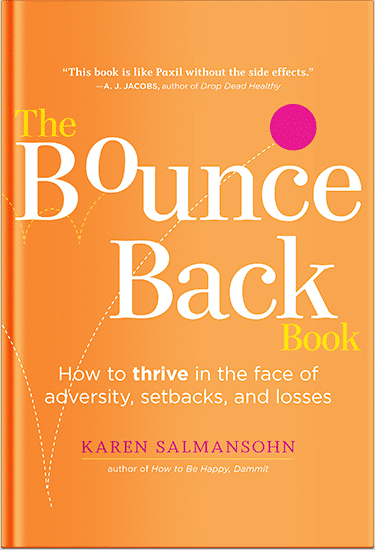 You may have heard of the term vacuum excavation as a new method of excavation in comparison to traditional excavation methods. Anyone working on construction projects or near underground utilities also knows the risk of traditional excavation methods and how damage to buried assets could lead to costly repairs, delays and safety hazards.
You may have heard of the term vacuum excavation as a new method of excavation in comparison to traditional excavation methods. Anyone working on construction projects or near underground utilities also knows the risk of traditional excavation methods and how damage to buried assets could lead to costly repairs, delays and safety hazards.
However, vacuum excavation technology is a non-destructive excavation method of safely and efficiently removing soil, digging trenches, and exposing buried utilities without the safety risks and damage to the surrounding area.
Whether you are dealing with compacted soil, frozen ground or even congested utility projects, vacuum excavation is a new advancement that is a superior alternative to traditional digging methods.
What is Vacuum Excavation?
Vacuum excavation is a nondestructive digging method using a vacuum system to remove soil and expose underground utilities. The vacuum excavator uses compressed air and high-pressure water to loosen the soil, which is then sucked into a specially designed tank.
People often call it hydro vacuum excavation; this versatile technology is useful in many civil engineering tasks.
The method avoids the risks tied to abrasive excavation methods and traditional hydraulic excavators, providing a safe and more efficient solution.
Benefits and Applications of Vacuum Excavation
Vacuum excavation offers improved safety, efficiency, and higher precision rates compared to traditional techniques. It minimises disruption to the surrounding area and environment, which gives you more precise control over your excavation methods.
Why is Vacuum Excavation Better than Other Methods?
Compared to manual hand digging and traditional hydraulic excavation, vacuum excavation work is intensely accurate and holds much less risk. You can easily avoid the risk related to abrasive excavation methods and cut down on time, manpower and costly repairs.
Safe and Efficient
Vacuum excavation is a non-destructive excavation method that allows you to dig trenches more safely and faster. It reduces the need for aggressive digging methods and injury risks while protecting the area when working with delicate underground utilities.
Uses Hydro Excavation Methods
A high-pressure water system loosens compact soil in hydro vacuum excavation, and a vacuum system then collects the loosened material. This method is efficient, clean and safe, as well as suitable for deeper and more solid ground conditions.
Non-Destructive Drilling
Because it is a non-destructive drilling method compared to the traditional technique, the vacuum excavation process will help you easily maintain the integrity of buried assets. So this method is not only faster and safer, but it also protects your project.
Non-Destructive Digging
Avoiding disruption to the surrounding environment is key to a sensitive utility project area. Vacuum excavation reduces impact on the surrounding area and thus ensures a safer and cleaner controlled dig site.
Industry Applications
Vacuum excavation is a new advancement used across a wide range of industries. These industries include Civil Engineering, Construction Projects, Gas Lines and telecommunications, and archaeological digs requiring non-invasive excavation methods.
Furthermore, it is ideal for environmental clean-ups, often using hot water to remove soil and debris that are disrupting ecosystems.
The rising popularity of the vacuum excavation method shows that more and more professionals prefer vacuum excavation work for its reliability and low risk of damaging buried utilities.
Equipment and Process Used for Vacuum Excavation Work
A vacuum excavator process involves a set of advanced specialised tools for handling excavation material.
The Vacuum excavator is the main machine powering the suction. Compressed air and high-pressure water are used to break apart compact soils. A vacuum hose is used to extract soil and debris, and the specially designed tank, or debris tank, collects loosened soil.
In terms of hydro vacuum excavation, no water is used to create a slurry, while compressed air lifts the soil. The vacuum then collects the loosened material in a debris tank for reuse or disposal.
The result is a cleaner and more efficient non-destructive digging excavation without the safety risks compared to traditional excavation.
Preparation and Safety Measures for a Vacuum Excavator
Before starting with vacuum excavation work, it is important to conduct a thorough site analysis and mark the underground utilities clearly. This helps to avoid damage when removing the soul and ensures your team does not strike sensitive gas lines or water mains.
When setting up the vacuum excavator, make sure that all its connections, vacuum hose and controls are in working order. During the operation, you must monitor the debris tank water levels, wear protective gear and follow all safety protocols. These steps are essential to prevent any injuries, health risks, and environmental damage.
Conclusion: Vacuum Excavation: The Safer and More Efficient Choice
Anyone working with underground utilities knows the risk associated with traditional excavation methods. There is no better option than vacuum excavation compared to traditional digging methods in terms of safety, efficiency, time, and environmental impact.
Unlike traditional excavation methods, vacuum excavation is an economical method that will unlock safer workflows and faster excavation methods. All this with minimal disruption and damage to the site because it’s a non-destructive excavation solution.
P.S. Before you zip off to your next Internet pit stop, check out these 2 game changers below - that could dramatically upscale your life.
1. Check Out My Book On Enjoying A Well-Lived Life: It’s called "Your To Die For Life: How to Maximize Joy and Minimize Regret Before Your Time Runs Out." Think of it as your life’s manual to cranking up the volume on joy, meaning, and connection. Learn more here.
2. Life Review Therapy - What if you could get a clear picture of where you are versus where you want to be, and find out exactly why you’re not there yet? That’s what Life Review Therapy is all about.. If you’re serious about transforming your life, let’s talk. Learn more HERE.
Think happier. Think calmer.
Think about subscribing for free weekly tools here.
No SPAM, ever! Read the Privacy Policy for more information.
One last step!
Please go to your inbox and click the confirmation link we just emailed you so you can start to get your free weekly NotSalmon Happiness Tools! Plus, you’ll immediately receive a chunklette of Karen’s bestselling Bounce Back Book!


 You may have heard of the term vacuum excavation as a new method of excavation in comparison to traditional excavation methods. Anyone working on construction projects or near underground utilities also knows the risk of traditional excavation methods and how damage to buried assets could lead to costly repairs, delays and safety hazards.
You may have heard of the term vacuum excavation as a new method of excavation in comparison to traditional excavation methods. Anyone working on construction projects or near underground utilities also knows the risk of traditional excavation methods and how damage to buried assets could lead to costly repairs, delays and safety hazards.